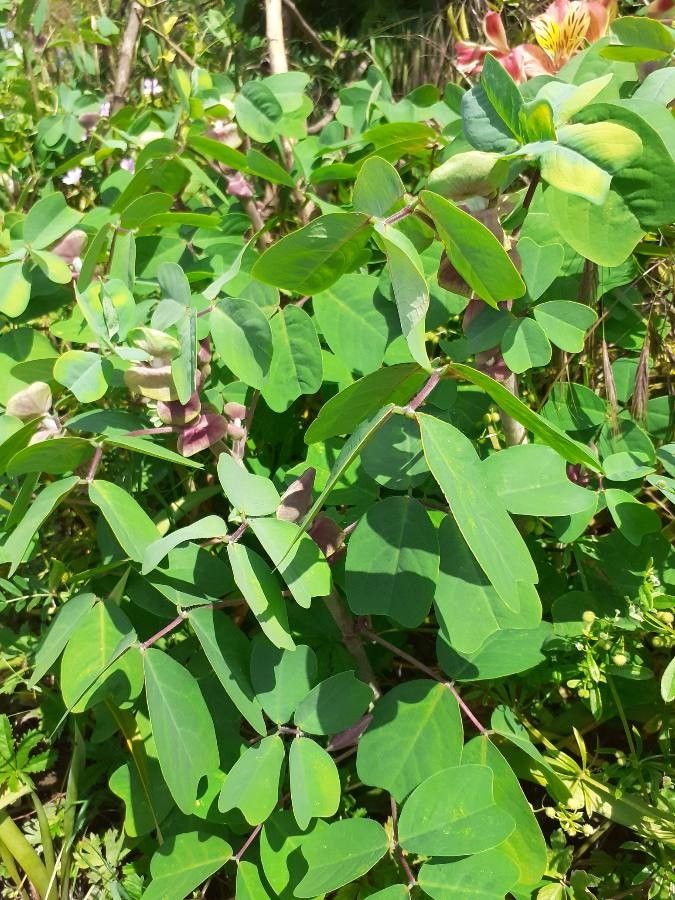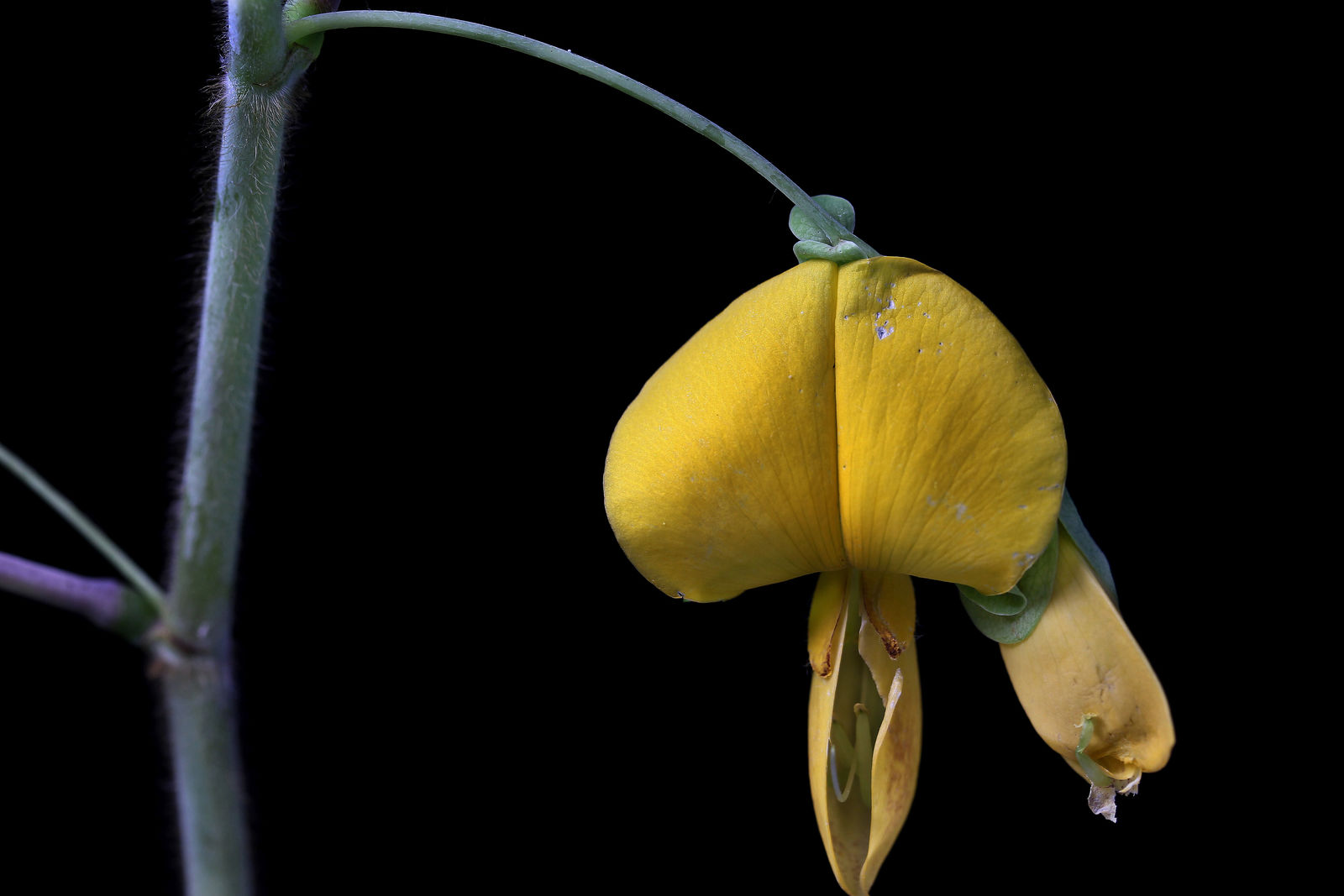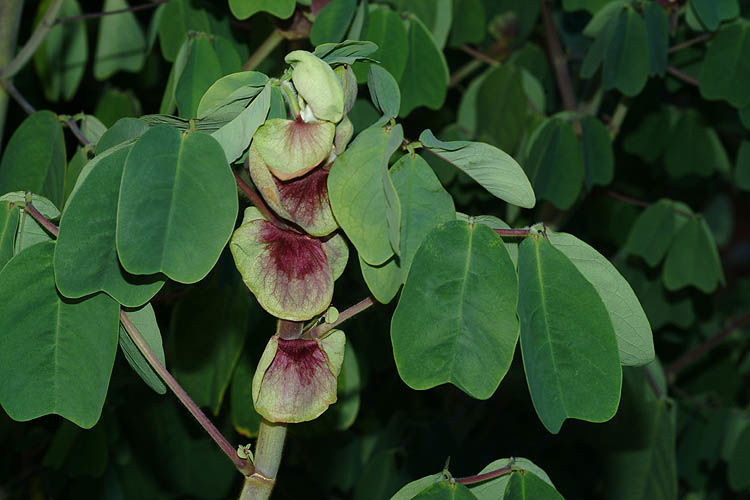False Sensitive Plant
amicia zygomeris
Also known as: ["False Sensitive Plant"]
Overview
A tropical vine with trifoliate leaves and yellow flowers, native to Central and South America.
Benefits & Perks
["fragrant flowers","wildlife attractant (bees, butterflies, birds)"]
Botanical Classification
| Phylum: | Magnoliophyta |
| Class: | Magnoliopsida |
| Order: | Fabales |
| Family: | Fabaceae |
| Genus: | Amicia |
| Botanical Name: | Amicia zygomeris |
Plant Characteristics
Basic Information
- Category: Flowers
- Suitable Location: outdoor garden bed in a sheltered spot
- Suitable For:
- Is Weed: No
- Allergenicity: low
Environmental Needs
- Climate: {"temperatureRange":"10–30°C"}
- Hardiness: {"zones":"8–10"}
- Misting: rarely required, only if ambient humidity is very low
- Drainage: Fast-draining to prevent waterlogging.
- Soil Type: Well-draining, loamy soil with added organic matter.
Maintenance Level
- Maintenance Level: moderate
- Toughness Level: moderate
- Pruning Frequency: Every 2–3 months or as needed to control size and shape.
- Pruning Intensity: Moderate; remove up to one-third of growth if overgrown.
Care Details
Ideal Sunlight Coverage:
Bright indirect light for 6–8 hours daily; can tolerate some direct morning sun but avoid harsh afternoon sun.
Sunlight Tolerance Tips:
Acclimate gradually to direct light, protect from intense midday sun, place near east-facing window for optimal light.
Care Requirements
Care Difficulty
moderatemoderate
Sunlight
full sun to partial shade
Rotate plant weekly for even growth; use sheer curtains to filter intense light; avoid direct afternoon sun.
Watering
every 7–10 days during active growth, reduce in winter
Water thoroughly until it drains from the bottom, allow soil to dry between waterings, avoid wetting foliage.
Soil
well-draining, loamy soil with some organic matter
pH: Slightly acidic to neutral (pH 6.0–7.0).
Use a mix of potting soil and perlite; avoid heavy clay soils; ensure pots have drainage holes.
Temperature
Prefers 65–75°F (18–24°C); tolerates a range of 50–85°F (10–29°C) but thrives in moderate warmth.
Avoid sudden temperature changes; maintain moderate warmth; protect from drafts.
Fertilizing
every 4–6 weeks during growing season
Dilute fertilizer to prevent burn; fertilize during active growth; flush soil occasionally to prevent salt buildup.
Propagation
Methods
Stem cuttings in spring or early summer.
Step-by-Step Propagation Guide
- Take 4–6 inch cutting, remove lower leaves, dip in hormone, plant in medium, keep moist and humid.
Best Time: Spring or early summer when the plant is actively growing.
Environment
High humidity (70–90%), warm temperatures (70–75°F), indirect light.
Medium
Well-draining mix of perlite and peat moss or cactus mix.
Hormone
Optional but recommended for faster rooting.
Timeline
Roots in 2–4 weeks; establish in 2–3 months.
Tools Needed
Pruning shears, rooting hormone, small pots, misting spray bottle.
Quick Tips
Use healthy, non-flowering stems; maintain humidity with a plastic bag; keep out of direct sun.
Pruning & Repotting
Pruning Guide
Method
Pinch back tips, cut just above a leaf node, remove crossing or damaged stems.
Pruning Plan
Prune to maintain shape, encourage bushier growth, and remove dead or leggy stems.
Tools
Clean pruning shears, gloves, disinfectant.
Checklist
Sanitize tools, prune during active growth, remove dead/damaged parts, shape evenly.
Repotting Guide
Best Season
Spring, before the active growing season begins.
Pot Size
One size up (e.g., from 4-inch to 6-inch pot); ensure good drainage.
Method
Remove plant gently, trim roots if needed, place in slightly larger pot with fresh soil, water lightly.
Suggestions
Repot every 2–3 years or when roots fill the pot; promotes fresh soil and root health.
Checklist
Check root bound status, prepare new pot, trim roots if necessary, use fresh soil, water lightly.
Advanced Care Tips
Watering Mastery
Watering Checklist
Check soil moisture, water thoroughly, ensure drainage, adjust for season.
How to Apply Water Properly
Water directly at the root zone, ensure water penetrates deeply to reach roots, allow excess to drain completely, water in the morning to reduce evaporation.
Watering Schedule Tips
Water deeply once the top inch of soil feels dry; reduce frequency in winter to prevent root rot.
Soil Improvement
Add perlite or sand for drainage, incorporate compost for fertility, ensure aeration with chunky ingredients.
Temperature Stress Management
Signs of Temperature Issues
Wilting, leaf drop, stunted growth, or yellowing leaves.
Cold Stress
Slows growth, may cause leaf drop or root damage if exposed to prolonged cold below 50°F (10°C).
Solution: Move to a warmer location, insulate pots, avoid cold drafts, protect from frost.
Hot Stress
Leaf scorch, wilting, or drooping due to excessive heat and dryness.
Solution: Provide shade, increase humidity, water more frequently, avoid placing near heat sources.
Fertilizing Guide
Fertilizing Checklist
Check season, dilute fertilizer, apply to moist soil, avoid foliage contact.
Fertilizing Method
Use balanced liquid fertilizer diluted to half strength every 4–6 weeks during growing season (spring/summer); cease in fall/winter.
Common Problems & Solutions
Toxicity Warning
Cats
Slightly ToxicCats may experience mild gastrointestinal upset if they consume parts of Amicia zygomeris. The toxic compounds can cause irritation and discomfort in the digestive system.
⚠️ Symptoms:
🌿 Toxic Parts:
⚡ Toxic If:
if eaten
Dogs
Slightly ToxicIn dogs, ingestion of Amicia zygomeris seeds or roots can lead to mild gastrointestinal upset and discomfort. The toxins may cause irritation to the digestive tract.
⚠️ Symptoms:
🌿 Toxic Parts:
⚡ Toxic If:
if eaten
Humans
Slightly ToxicAmicia zygomeris contains toxic compounds that can cause mild gastrointestinal distress and other systemic effects upon ingestion. The toxins interfere with normal digestive processes and may lead to discomfort.
⚠️ Symptoms:
🌿 Toxic Parts:
⚡ Toxic If:
if eaten
Frequently Asked Questions
Q: Is Amicia zygomeris toxic to pets?
A: There is insufficient data on its toxicity to pets.
Q: How often should I water Amicia zygomeris?
A: Water moderately, allowing the soil to dry slightly between waterings.
Q: Does Amicia zygomeris attract wildlife?
A: Yes, it attracts bees, butterflies, and birds with its fragrant flowers.
Quick Reference
| Family: | Fabaceae |
| Care: | moderate |
| Light: | full sun to partial shade |
| Water: | every 7–10 days during activ |
Get Expert Care Tips
Download the Plantious app for personalized care reminders and plant identification!
Google Play App Store








